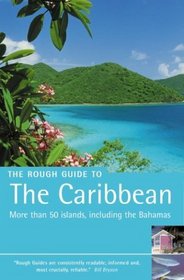Search -
The Rough Guide to The Caribbean: More Than 50 Islands, Including the Bahamas
The Rough Guide to The Caribbean More Than 50 Islands Including the Bahamas
Author:
INTRODUCTION Palm trees swaying over white-sand beaches, pellucid waters with teeming reefs just a flipper-kick from the shore and killer rum cocktails brought right to your lounge chair – this is the Caribbean, as per everyone’s favourite tropical fantasy. The ultimate place to flop on the sand and unwind, the region offers sun, sand... more »
Author:
INTRODUCTION Palm trees swaying over white-sand beaches, pellucid waters with teeming reefs just a flipper-kick from the shore and killer rum cocktails brought right to your lounge chair – this is the Caribbean, as per everyone’s favourite tropical fantasy. The ultimate place to flop on the sand and unwind, the region offers sun, sand... more »
ISBN-13: 9781858288956
ISBN-10: 1858288959
Publication Date: 11/25/2002
Pages: 768
Rating: 1
ISBN-10: 1858288959
Publication Date: 11/25/2002
Pages: 768
Rating: 1
5 stars, based on 1 rating
Genres:
- Travel >> Caribbean >> Bahamas
- Travel >> Caribbean >> General
- Travel >> Guidebook Series >> Rough Guide




